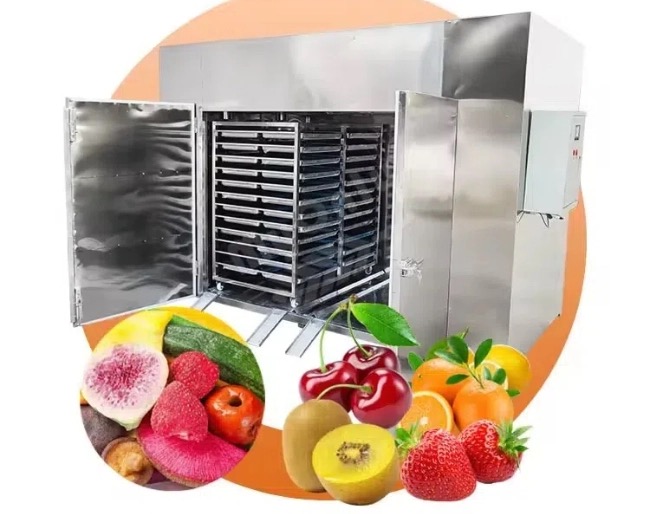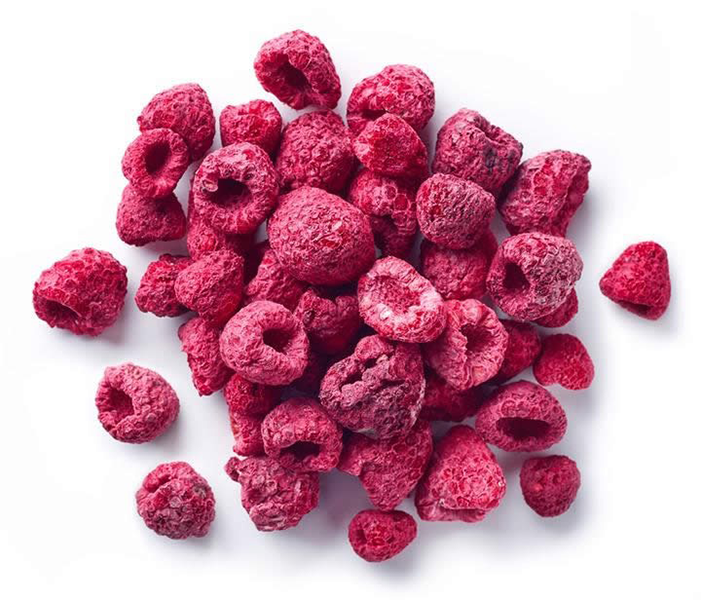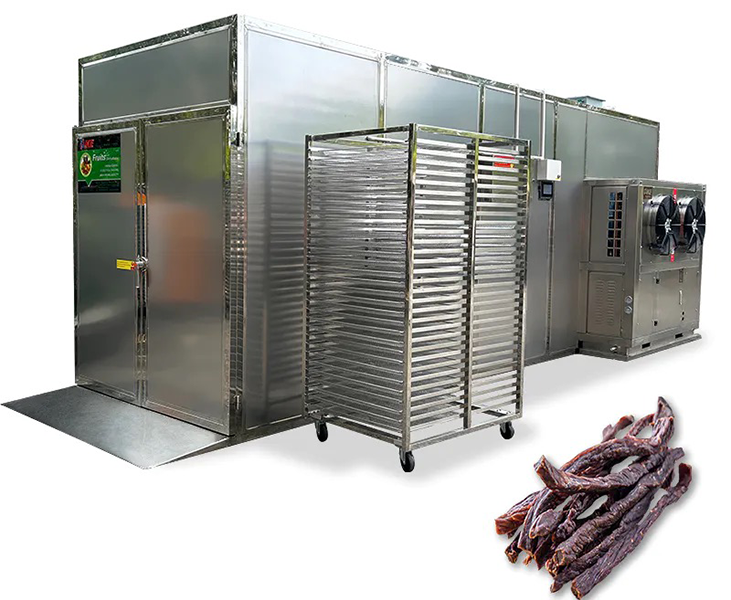
Content Menu
● Introduction to Industrial Dehydrators
>> Key Features of Industrial Dehydrators
>> Benefits of Using Industrial Dehydrators
● Advanced Technologies in Industrial Dehydrators
>> Dual Drying System (DDS)
>> Exhaust Recirculation
● Choosing the Right Industrial Dehydrator
>> Case Study: Implementing Industrial Dehydrators in Food Production
● Applications of Industrial Dehydrators
● Conclusion
● Frequently Asked Questions
>> 1. What are the primary objectives of food dehydration?
>> 2. How does permanent air balance improve dehydrator performance?
>> 3. What are the benefits of using a Dual Drying System (DDS)?
>> 4. How does exhaust recirculation improve the dehydration process?
>> 5. What factors should be considered when choosing an industrial dehydrator?
● Citations:
Industrial dehydrators play a crucial role in enhancing the quality of dried foods by efficiently removing moisture, preserving nutrients, and ensuring consistent processing conditions. These machines are designed to meet the specific needs of food manufacturers, providing a reliable method for producing high-quality dried products. In this article, we will explore how industrial dehydrators improve food quality, discuss their key features, and highlight the benefits they offer to food processors.

Introduction to Industrial Dehydrators
Industrial dehydrators are sophisticated pieces of equipment used in the food processing industry to remove moisture from food products. This process not only extends the shelf life of foods but also helps maintain their nutritional value and flavor. Unlike conventional ovens, dehydrators operate at lower temperatures, typically between 85°F and 160°F, which is ideal for preserving the delicate nutrients found in foods.
Key Features of Industrial Dehydrators
1. Efficient Airflow and Temperature Control: Industrial dehydrators are equipped with advanced airflow systems that ensure uniform drying conditions. This is crucial for preventing hot spots and cold spots, which can lead to inconsistent product quality.
2. Permanent Air Balance: This feature ensures that the airflow within the dehydrator remains consistent, allowing for precise control over the drying process. It helps maintain a stable "breakpoint" where high-velocity air meets low-velocity air, resulting in uniform drying.
3. Energy Efficiency: Modern industrial dehydrators are designed to be energy-efficient, reducing operational costs and environmental impact. For example, Marlen's dehydrators require up to 50% less horsepower than multi-fan ovens.
4. Sanitation and Maintenance: Industrial dehydrators are built with sanitation in mind, featuring designs that facilitate easy cleaning and maintenance. This includes hinged supply ducts and clean-in-place nozzles.
Benefits of Using Industrial Dehydrators
- Improved Product Quality: By maintaining consistent drying conditions, industrial dehydrators ensure that dried foods retain their color, texture, and flavor. This is particularly important for products like fruits and vegetables.
- Increased Shelf Life: Removing moisture from food prevents the growth of bacteria, yeast, and mold, thereby extending the shelf life of dried products.
- Nutrient Preservation: Operating at lower temperatures helps preserve the nutrients and enzymes in food, making dehydrated products a healthier option.
- Energy Savings: Technologies like exhaust recirculation and dual drying systems can significantly reduce energy consumption during the dehydration process.
- Operational Efficiency: Industrial dehydrators streamline production by reducing labor and downtime. Features like permanent air balance eliminate the need for frequent adjustments or product rotation.

Advanced Technologies in Industrial Dehydrators
Dual Drying System (DDS)
The DDS technology uses sensors to monitor dry-bulb and wet-bulb temperatures, maintaining optimal humidity levels for drying. This results in vivid color retention, good flavor, and significant energy savings—up to 70% compared to conventional methods.
Exhaust Recirculation
Recirculating exhaust air can reduce energy costs by 30% to 60% and prevent case hardening, which slows down the drying process. This method also improves product quality by maintaining consistent moisture levels.
Choosing the Right Industrial Dehydrator
When selecting an industrial dehydrator, several factors should be considered:
1. Capacity and Space: Ensure the dehydrator can handle the desired volume of food and fits within the available space.
2. Energy Efficiency: Opt for models with advanced features that reduce energy consumption.
3. Sanitation and Maintenance: Choose dehydrators designed for easy cleaning and maintenance.
4. Customization: Consider dehydrators that can be tailored to specific product needs.
5. Brand Reputation and Support: Select a reputable manufacturer that offers reliable customer support.
Case Study: Implementing Industrial Dehydrators in Food Production
A leading food manufacturer recently integrated industrial dehydrators into their production line for drying fruits and vegetables. By utilizing the DDS technology and exhaust recirculation, they achieved a 40% reduction in energy costs and a significant improvement in product quality. This resulted in increased customer satisfaction and market competitiveness.
Applications of Industrial Dehydrators
Industrial dehydrators are versatile and can be used for a wide range of food products, including:
- Fruits and Vegetables: Ideal for drying fruits like strawberries and apricots, and vegetables such as carrots and broccoli.
- Meat and Poultry: Used for drying meats to create jerky or to preserve meat for pet food.
- Herbs and Spices: Preserves the flavor and aroma of herbs and spices by drying them at low temperatures.
- Pet Food: Essential for producing high-quality dried pet food that retains nutritional value.
Conclusion
Industrial dehydrators are indispensable tools for enhancing the quality of dried foods. By providing consistent processing conditions, preserving nutrients, and ensuring energy efficiency, these machines help food processors meet consumer demands for high-quality, sustainable products. Whether you are a brand owner, wholesaler, or manufacturer, integrating an industrial dehydrator into your production line can significantly improve your product offerings and operational efficiency.

Frequently Asked Questions
1. What are the primary objectives of food dehydration?
- The primary objectives of food dehydration are to achieve lethality requirements and desired finished product characteristics, ensuring safety and quality.
2. How does permanent air balance improve dehydrator performance?
- Permanent air balance ensures consistent airflow, preventing hot spots and cold spots, which leads to uniform drying and improved product quality.
3. What are the benefits of using a Dual Drying System (DDS)?
- DDS offers vivid color retention, good flavor, and significant energy savings—up to 70% compared to conventional methods.
4. How does exhaust recirculation improve the dehydration process?
- Exhaust recirculation reduces energy costs, prevents case hardening, and improves product quality by maintaining consistent moisture levels.
5. What factors should be considered when choosing an industrial dehydrator?
- Key factors include capacity, energy efficiency, sanitation, customization options, and brand reputation.
Citations:
[1] https://marlen.com/key-factors-for-food-dehydration/
[2] https://huggingface.co/openbmb/VisCPM-Chat/raw/main/vocab.txt
[3] https://marlen.com/industrial-dehydration-consistent-process-with-permanent-air-balance/
[4] https://itpo-tokyo.unido.org/en/technology_db/6436/
[5] https://www.webstaurantstore.com/guide/741/food-dehydrators-buying-guide.html
[6] https://extension.okstate.edu/fact-sheets/dehydrator-exhaust-recirculation-for-energy-savings.html
[7] https://www.japan.go.jp/tomodachi/2016/newyear2016/hi-tech_innovation.html
[8] https://www.linkedin.com/advice/0/what-factors-should-you-consider-when-selecting-7lkle











